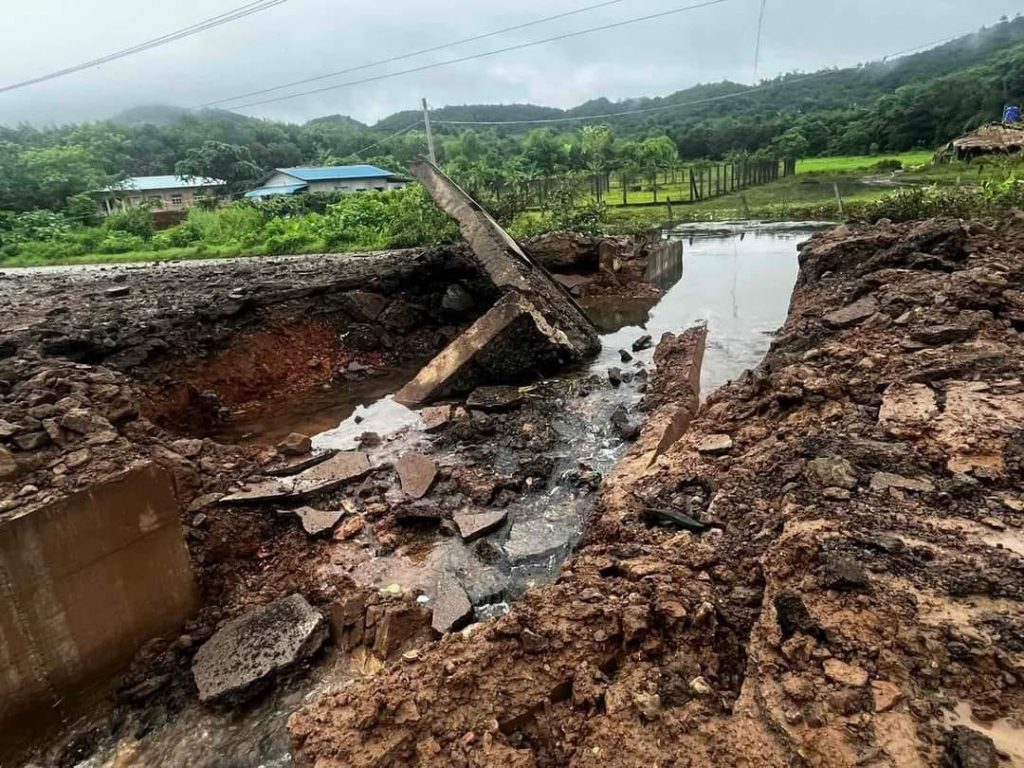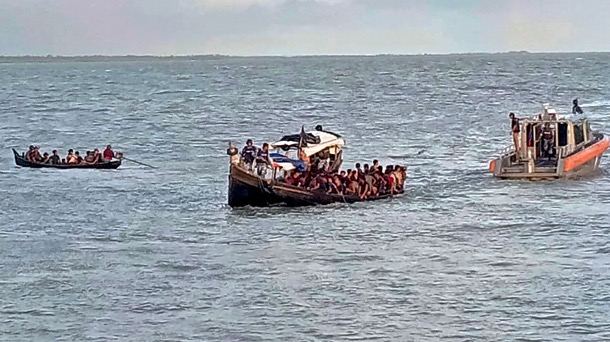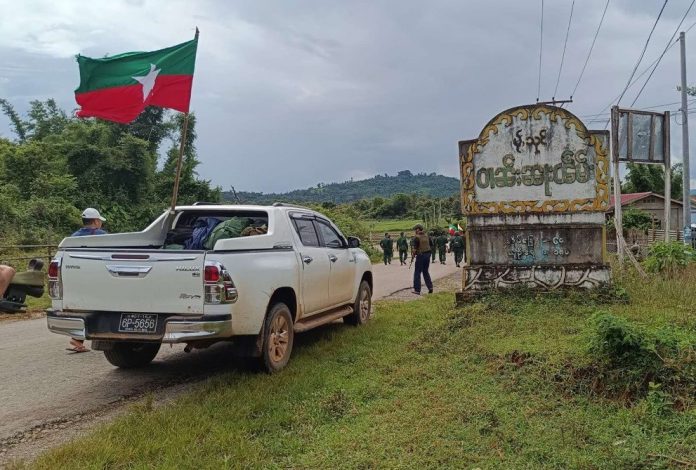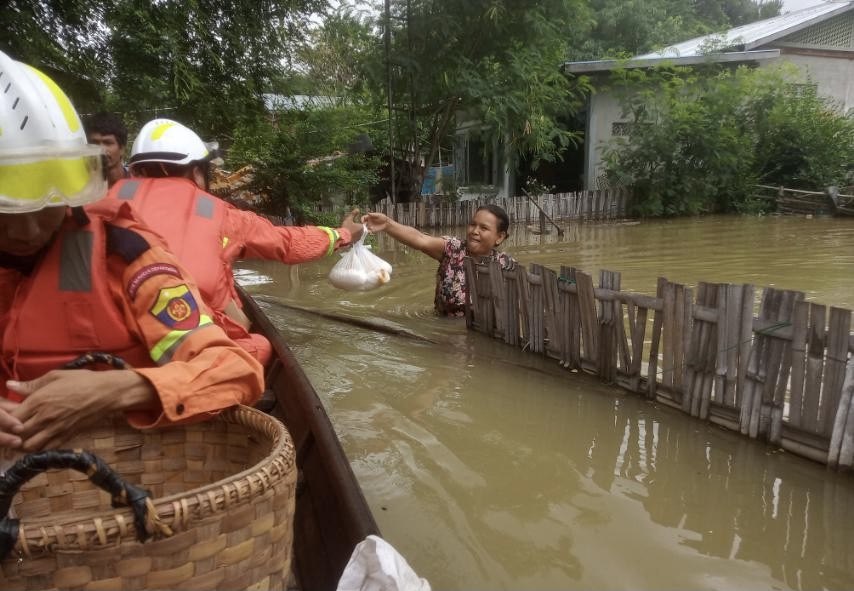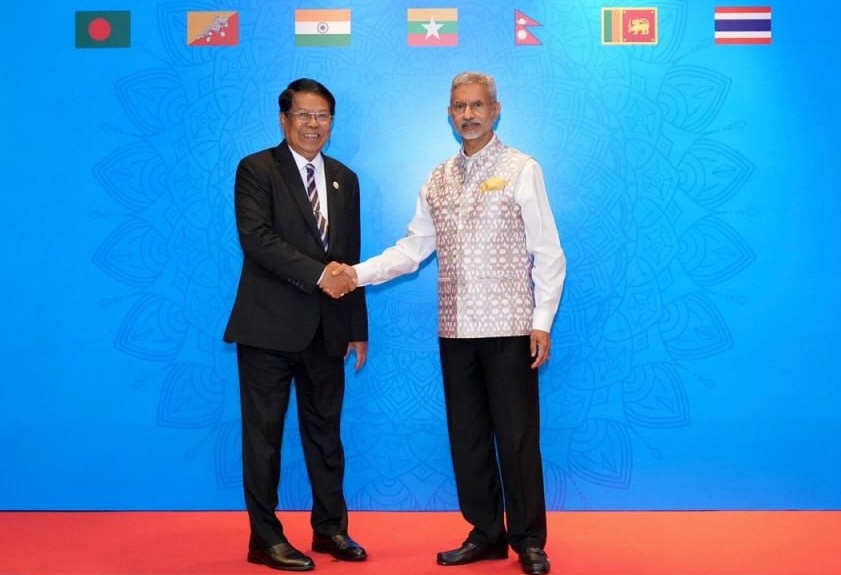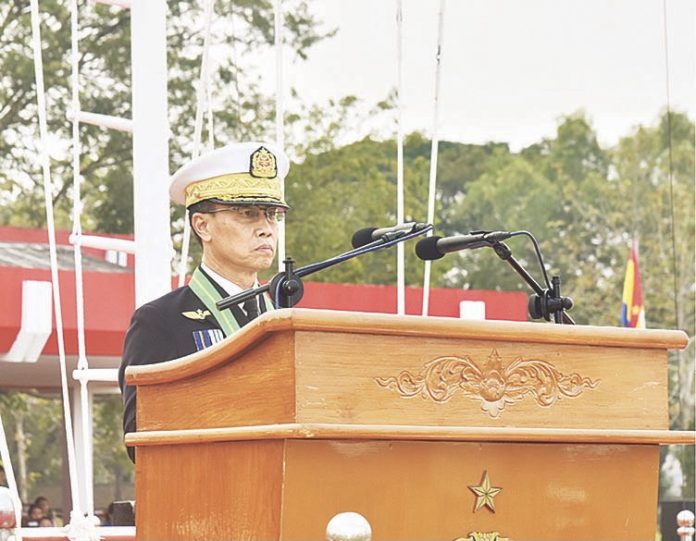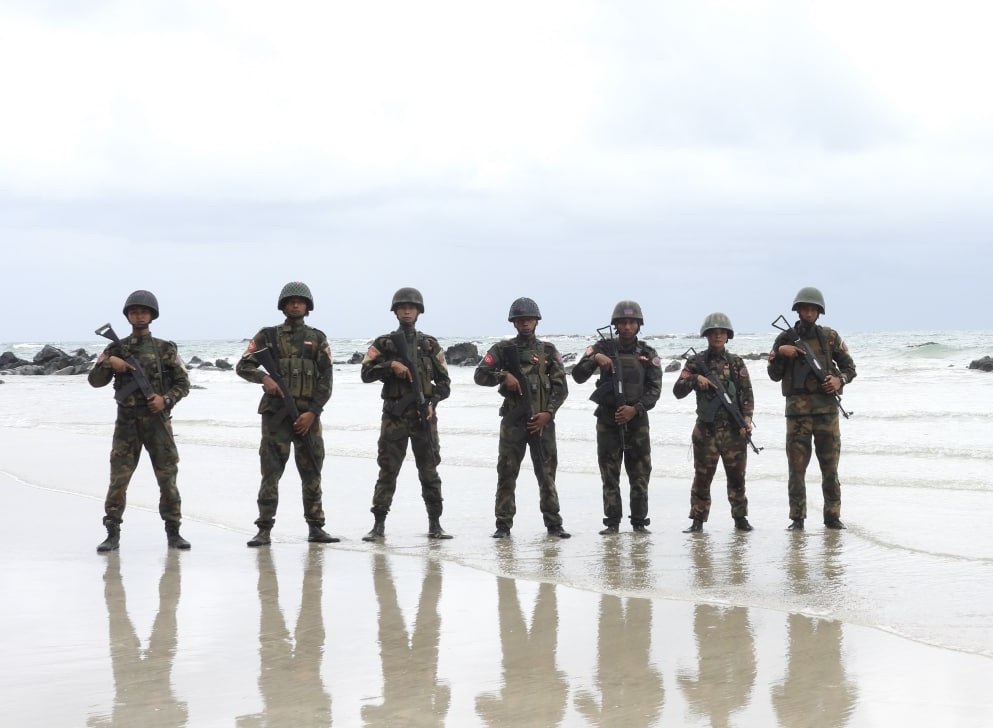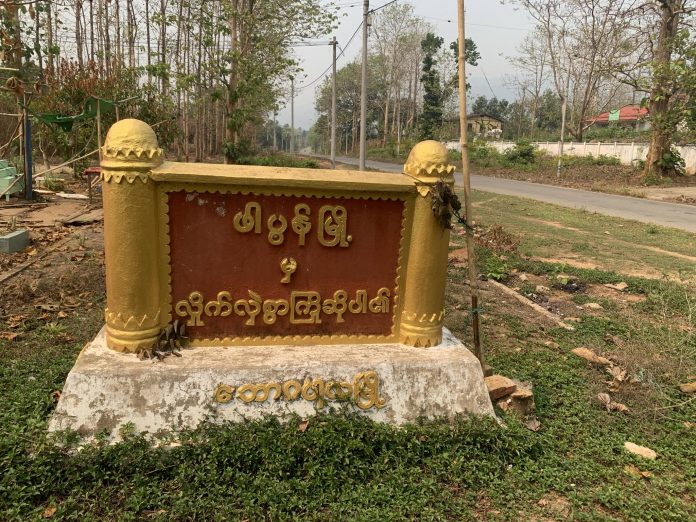Guest contributor
Saw Htee Cher
In June, the media focus in Myanmar was on the rapid gains by the Kachin, Chin, and Arakan armies, while the resumption of fighting in northern Shan State has put the spotlight back on the Ta’ang and the Kokang.
All of this, including the Mandalay People’s Defense Force (PDF) offensive in the Mandalay Region, has overshadowed activity occurring in southeastern Myanmar. But the Karen, the Karenni, and the Mon have been continuing their fight against the regime in Naypyidaw.
Karenni State
In late May, the regime launched a counter-offensive against Operation 1111, which was launched by Karenni resistance forces on Nov. 11, following the success of Operation 1027 in northern Shan State.
The Karenni forces had cornered remaining regime troops into reinforced urban positions such as the Loikaw prison and battalion camps in Hpruso, Hpasaung, and other towns.
Northern Karenni State is only 200 km from the fortified capital Naypyidaw, so Karenni liberation has always been perceived by the regime as an urgent threat.
In late May they sent a column of 500 troops south from Hsihseng in southern Shan State toward Loikaw, the Karenni State capital. These troops had subdued Hsihseng town in April, after the Pa-O National Liberation Army (PNLA) had liberated it in January.
Now those troops set out to reinforce their embattled colleagues in Loikaw and Moebye. Throughout June the Karenni Nationalities Defense Forces (KNDF), a network of PDF battalions formed after the 2021 coup, and the decades-old Karenni Army, fought the advance.
Elements of it reached Loikaw in early June. Another reinforcement column from Bawlakhe to the south failed to reach Loikaw due to the effective Karenni resistance. On June 30, the Karenni forces, exhausted and low on ammunition, had to withdraw and cede control of Loikaw back to the regime.
But only four days later the Karenni were back, attacking regime positions in three wards of Loikaw and inflicting casualties. That fight continues. Regime propaganda outlets demand that bureaucrats and teachers return to Loikaw and resume their duties. The homes of many of these workers were destroyed by regime shelling and airstrikes, so they have nowhere to live.
Karenni forces struck the regime in Bawlakhe Township to the south, capturing a camp there on June 25 after a seven-day siege. The regime dispatched another column of approximately 200 troops and 300 members of its subordinate ethnic Pa-O National Organization (PNO) militia from southern Shan State’s Pinlaung toward Pekon, but they were halted by Karenni defenses before reaching the town.
Both Pekhon and Moebye were detached from Karenni State and assigned to Shan State in Myanmar’s 1952 territorial reorganization. The local population is largely made up of Karenni, Kayan, and other related ethnicities, and the Karenni administration intends to reclaim this area through a referendum after the end of hostilities. Thus, the Pekon area is defended by the KNDF.
Karen State
The Karen army’s liberation of Hpapun town in Mutraw District at the end of March was followed up with a siege of five battalion camps just to the south. The first of those fell on March 30, then another in late April, but three more remain, and a sort of stalemate has set in.
That could be broken soon by a renewed Karen assault. The Karen army continuously attacks the encircled camps with drone bombing and sniper fire, but the camps are receiving food and ammunition via air drops.
The regime has attempted to reinforce them by abandoning smaller camps elsewhere in Mutraw District and sending their contingents to Hpapun, but the Karen blockade has prevented their arrival.
Mutraw District is almost completely liberated at this point, with the exception of a few battalion camps and a dwindling number of isolated outposts. The enemy no longer has any presence in the border area along the Salween River.
Tanintharyi Region
The greatest Karen advances lately have come in Beit-Tavoy District (known as Tanintharyi Region on Burmese maps). That is the domain of Karen army Brigade 4, which mostly sat out the first two years of the war while newly-formed PDFs, also predominantly Karen, fought the regime.
During 2024, however, Brigade 4 has come alive and been a factor in the turning tide of the war in the district. It has benefited from the assistance of Battalion 27, a far-ranging unit from Brigade 6 to the north in Dooplaya District.
Brigade 4 and its allied PDFs captured their first regime camp in Dawei Township in the north in late January, followed immediately by two more in nearby K’ser Doh Township (called Thayetchaung on Burmese maps) and another in Palaw Township in the central region.
Two more camps fell in Bokpyin and K’ser Doh townships in March. Reinforcements sent from Mon State were intercepted by Karen forces, who control National Highway 8, the only continuous road into the district.
In March, the regime replaced its general in charge of Beit-Tavoy District in frustration at his consistent losses to Karen forces there. As events would prove, a mere change in leadership was not sufficient to stem the losses, which were symptomatic of an overall shift in the balance of power.
Karen forces scored a major victory near the Thailand border on the road from Dawei on April 15, overrunning a camp and capturing 48 regime troops alive along with all their weapons. Nine days later another border camp fell when the 40 troops there fled a Karen assault, and at the end of June another camp near the Mawtaung border crossing was abandoned.
Because the roads leading to the Myawaddy, Htee Khee, and Mawtaung border crossings are controlled by Karen forces, the regime is attempting to build an alternative trade corridor through Kawthaung, the southernmost point of Myanmar territory.
From there, goods are to be sent to Yangon by ship across the Gulf of Martaban. It is only a matter of time, however, before Karen forces also take control of Kawthaung.
The most significant victory thus far came in May when Karen forces took three camps on the national highway, including the command center at Pedet in K’ser Doh Township. The regime considered the loss significant enough to conduct numerous airstrikes in retaliation.
At this point, regime control is confined to the main cities of Dawei, Beit, and Palaw, and certain remaining camps. The rural areas and main roads are under Karen control.
The central area of Kawthoolei has been the scene of a fizzling regime counter-offensive and a disturbing criminal resurgence by the pro-regime Border Guard Force (BGF).
After wearing down and capturing three battalion camps near the key border city of Myawaddy and another one in the city during early 2024, Karen forces briefly occupied the city in April, right up to the crossing into Thailand.
When that happened, however, the regime launched a major invasion force from Hpa’an and Mawlamyine along the Karen-controlled Asia Highway to retake Myawaddy, featuring over 1,000 troops with armored vehicles.
This was called Operation Aung Zeya, after an 18th Century Burmese king who unsuccessfully invaded Siam (Thailand). As Karen Brigade 6 took up positions in the Dawna mountain range to oppose this column, the BGF took advantage of the power vacuum in Myawaddy to seize control of the city.
The BGF was a creation of the Burma military in 2010, but declared its autonomy from it in January 2024 as the regime appeared to be losing the war. More of an armed criminal cartel than a militia, the BGF derives its sustenance from lucrative international gambling, telephone scam, and human trafficking hubs at Shwe Kokko, KK Park, and other points along the Thai border.
Though the regime was losing, the Karen National Union (KNU) was unlikely to tolerate the criminal activities on which the BGF depends, so the BGF decided to rejoin the junta. It assisted a small remaining regime garrison to retake control in Myawaddy.
While that was going on, the regime’s armored column retook control of Kruh Tu (Kyondo) and Kaw T’Ree (Kawkareik) towns west of the Dawna Range on the Asia Highway, then launched into the mountains on the way toward Myawaddy.
That’s as far as it got, however. Since mid-April it has not been able to advance, suffering over 400 casualties and the loss of some armored vehicles at the hands of Karen forces, which are armed with the artillery captured from the defeated Myawaddy battalions. The regime was obliged to redeploy 200 troops to Arakan State where it is suffering devastating losses.
The monsoon rains began in May, rendering alternative routes through the mountains nearly impassable. The immense armored column now appears unlikely to ever reach Myawaddy, and it has returned to Kaw T’Ree town. The Karen army is attacking and threatening to overwhelm its remnant.
The BGF, meanwhile, is enjoying a malevolent heyday. Pressure from Thailand and China has complicated the continued operation of its main crime hub at Shwe Kokko. To compensate, it has taken control of Xrotherpler town in southern Dooplaya (known as Payathonsu or Three Pagodas Pass on Burmese maps).
The BGF has commenced the construction of a new international crime center, and has shifted some of the Chinese crime bosses there from Shwe Kokko. Prior to this, Xrotherpler had been mostly liberated and a tense calm reigned, but control was fractured among the Karen army, the DKBA armed faction, and others.
Whenever the Karen army can turn its attention from the armored column in Kaw T’Ree, it will need to deal with the unresolved problem of the BGF.
Mon State
Mon liberation forces are small compared to the Karen army, and consist of PDFs initiated since the 2021 coup. The main Mon armed group, the New Mon State Party (NMSP), has taken the side of the regime.
Disgruntled leaders within the NMSP broke away in March 2024 and formed a splinter group called the NMSP Anti-Dictatorship (NMSP-AD), which has joined forces with the Mon PDFs. Together they have attacked regime checkpoints, bridge guard posts, and other outlying positions with some success. At times they take control of National Highway 8 in southern Mon State to block the passage of regime supplies and personnel.
The Mon resistance forces are still too small at this point to hold territory or invade cities. To a certain extent they coordinate with the much larger Karen army Brigade 6 from adjacent Dooplaya District in Kawthoolei.
At this stage, the regime has only enough manpower to mount one or two major counter-offensives at a time to try to prevent defeat and retake lost territory.
It has done that along the Asia Highway leading toward Myawaddy, retaking control of Kruh Tu and Kaw T’Ree towns but failing to even get near Myawaddy, and now the column’s momentum has dissipated.
At some point the Karen will be able to turn their attention back toward the Myawaddy border crossing and deal with the divisive criminality of the BGF.
The counter-offensive in Karenni is currently at its height, but this is not the first time it has launched a major movement there, and all previous ones have failed. Like the Karen to the south, the Karenni will regroup and retake the initiative. The regime’s deepening personnel deficit will necessarily undermine its momentary show of strength.
For such an immense institution, the regime forces have been remarkably ineffective at warfare. Since the coup it has lost almost every battle, even to inexperienced PDFs, winning only on occasions when it can concentrate a lot of troops against smaller resistance forces.
The unmistakable trend has been a shift of power toward the resistance, and that has been accelerating in Kachin, Chin, Arakan, and northern Shan. Victories there indirectly benefit the Karen, Karenni, and Mon.
Unlike the regime, the resistance forces enjoy a deep supply of fighting volunteers, augmented further since Naypyidaw’s forced conscription in February drove thousands of youth to join the resistance forces.
What it lacks is an abundance of ammunition to fight the regime, and anti-aircraft weapons to stop the airstrikes. Its supplies depend on small donations and crowdfunding, which slows the war effort at times.
The armed resistance is an extension of the public’s determination not to live under military dictatorship, however, and a committed public is the factor that will inevitably decide the outcome of the war.
Saw Htee Cher has been an international humanitarian aid worker in Myanmar both before and after the 2021 coup d’état, starting under the Thein Sein administration in 2011. He writes Burma Coup Resistance Notes.
DVB publishes a diversity of opinions that does not reflect DVB editorial policy. We’d like to hear what you think about this or any of our stories: [email protected]
